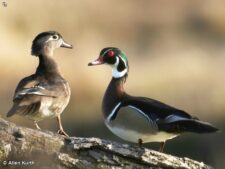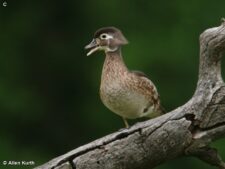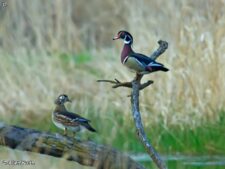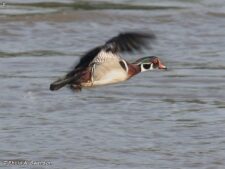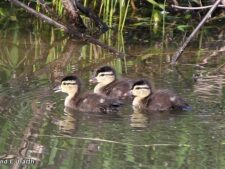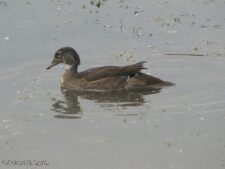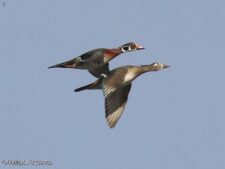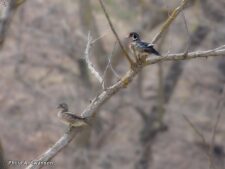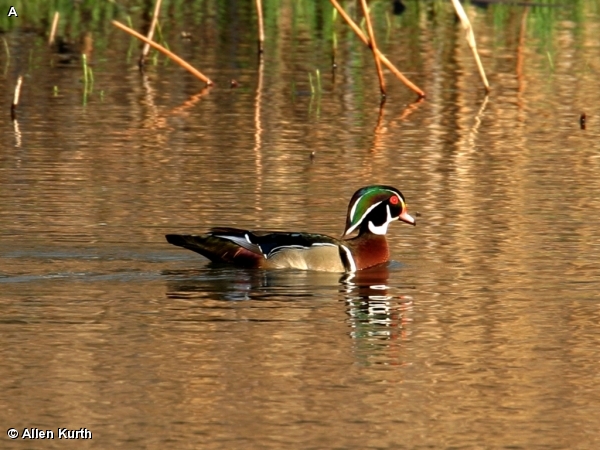
17 to 20” long with a wingspan of 28 to 30”. The Wood Duck is one of our most beautiful ducks. This is a medium sized duck with a crest on the head and a white chin and upper throat that is prominently seen from beneath while in flight. The tail is somewhat squared off. The Wood Duck is relatively long-winged. The speculum is blue-green with a white stripe at the rear. The breeding male has a red bill and a red eye. The head is green with white stripes on the green crest. The white throat patch has fingerlike extensions up towards the cheek and the nape. The chest is chestnut with a vertical white stripe at the rear. The flanks are golden bordered above by a white flank stripe. The belly is white and the back and wings are iridescent green-blue. The male is in breeding plumage from fall until early summer. In non-breeding plumage the male is similar to a female but often retains the distinctive neck patch and red bill. The female has a gray bill. She also has a teardrop shaped patch around the eye and a white throat. Her back is dark brown and her head and neck are gray-brown. The gray-brown breast is stippled with white fading to a white belly.
The Wood Duck is a common breeder that can show up as early as late February and departs as late as mid November. It is best seen in the Great Marsh and along Stream Trail.
The Wood Duck is a common bird of wooded habitats near water. It regularly nests in natural cavities and is commonly seen perched in trees. It feeds on acorns and other seeds as well as vegetable materials. When on the water it can be surprisingly difficult to see as it blends into the weeds. It was very common years ago and then experienced a decline due to over-hunting and loss of habitat. It has since rebounded to be common. The use of nest boxes, expanding beaver populations which create favored wetland habitat, and restrictive harvests are all thought to have contributed significantly to the recovery of the Wood Duck. This species is highly prized by hunters, comprising more than ten percent of the annual waterfowl harvest in the U.S. It is second only to the Mallard in number of birds shot. When flushed the female gives a rising “hooeek, hooeek” that sounds similar to a cry.
Disclaimer: The content of NatureSearch is provided by dedicated volunteer Naturalists of Fontenelle Forest who strive to provide the most accurate information available. Contributors of the images retain their copyrights. The point of contact for this page is: Phil Swanson.

